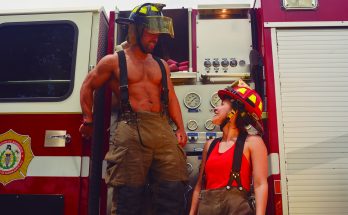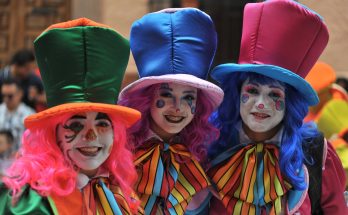By Oriol Bolaño
The neighborhood of Santa María del Obraje is a pillar and springboard of cultural reactivation, integration, growth, and economic consolidation of San Miguel de Allende.
The history of the Obraje has gone through three important stages. The first began in 1746 with Baltazar Sautto y Villachica, a strong, hard-working man, and a prosperous businessman. He excelled in the Obraje workshop business, and he planted and grew grain in the area. This business effort turned the region into a major breadbasket in the country making Mexico self-sufficient in grain and even exporting it. The Obraje of Sautto was one of the most important looms in the region, sending merchandise from San Miguel to Mexico City and all the main cities of the country. This was particularly due to the high quality of the wool, its designs, and colors.
During those times, the neighborhood of El Obraje was called San José del Obraje in honor of the chapel of the same name. Sautto became one of the most distinguished and powerful men in San Miguel El Grande, and he amassed a significant fortune. In addition to holding the position of Perpetual Councilor, he was elected mayor and tax officer. The world entered the Industrial Revolution in 1760 and continued to develop until 1890. This affected this agrarian and manufacturing community and caused it to change particularly after the death of Sautto in 1766.
Thus began the second stage of the neighborhood as it transformed its economic activity and reoriented it toward industrialization. At the end of 1890, an important English economic group installed an industrial factory in the neighborhood of Obraje. It was the first of its kind following the world trend to develop modernized loom workshops. Over the years, this very important factory was given as payment to the Garay family—an enterprising and extraordinarily hard-working family of Spaniards. Under their tutelage and leadership, they transformed it into an industry that would give great national and international prestige to San Miguel de Allende and to the neighborhood. The products were blankets and mantillas, among others, and were sold throughout the country and exported throughout the world. This enhanced the local economy and made it extremely important to the community. For more than 90 years, Fabrica Aurora brought work and well-being to the community until it closed its doors because of union issues at the end of the last century.
The third stage of evolution of the Barrio del Obraje integrates the best of the previous two creating Santa María del Obraje. The neighborhood seeks to preserve and integrate various elements; to continue to be the area of greatest economic, social, and cultural influence in the city; in addition to enhancing connections with the world. Businessman Pablo Rodríguez is leading the move toward the current transformation in which the main focus will be people and not the production of goods. It will involve creating holistic spaces that connect with the spirit— with culture as its central axis.
Rodríguez has taken a ruined building, dating from the 18th century, has had it restored and turned it into a Cultural Center. It is used to present some of the most important events in the city such as the Winter Chamber Music Festival, the Baroque Music Festival, the Festival of Jazz & Blues, the Festival of Theater and Dance, and choral concerts. This Center has also been the promoter and venue of the Cervantino Festival in its latest edition. There have also been exhibitions, promotion of artists, sculpture, painting, theater, and entertainment workshops. Some of the best Mexican architects have been hired to embellish the place and restore the Chapel of San José del Obraje, as well as the 18th century Troje, and the unique curtain of the 19th century Dam. Thanks to this Center, the economic activity of the area has shifted toward cultural and experiential activities where traditions are also promoted. The beautiful Hotel Live Aqua is located in the neighborhood. It has won international awards for its architecture and contemporary design yet maintaining a deep respect for the architecture of the area and integrating colonial elements.
Another important aspect is a reintegration into nature. With a vision toward the future, Rodríguez undertook the task of creating an ecological preserve—a most important territorial reserve within the historic center of the city. The Charco del Ingenio is a place where residents and visitors can enjoy nature as recreated, contained, and adorned by a dam still in operation. Thanks to the care provided, the area has become a stopping point for Canadian ducks, monarch butterflies, and other endemic animals and plants. It is an incomparable place for its beauty and recreation.
When Fabrica Aurora stopped being a textile factory, it became an art center which made the neighborhood not only an essential place to visit and live in but also became a draw for tourism. “It added great value to the city and the region, maintaining the prestige of the city of San Miguel de Allende in the world,” commented Rodríguez.
This neighborhood continues to evolve honoring its history and continue giving a positive message to the world about Mexican values. Santa María del Obraje will continue to pleasantly surprise us with its beautiful and spectacular transformation.
This will continue in subsequent editions.




